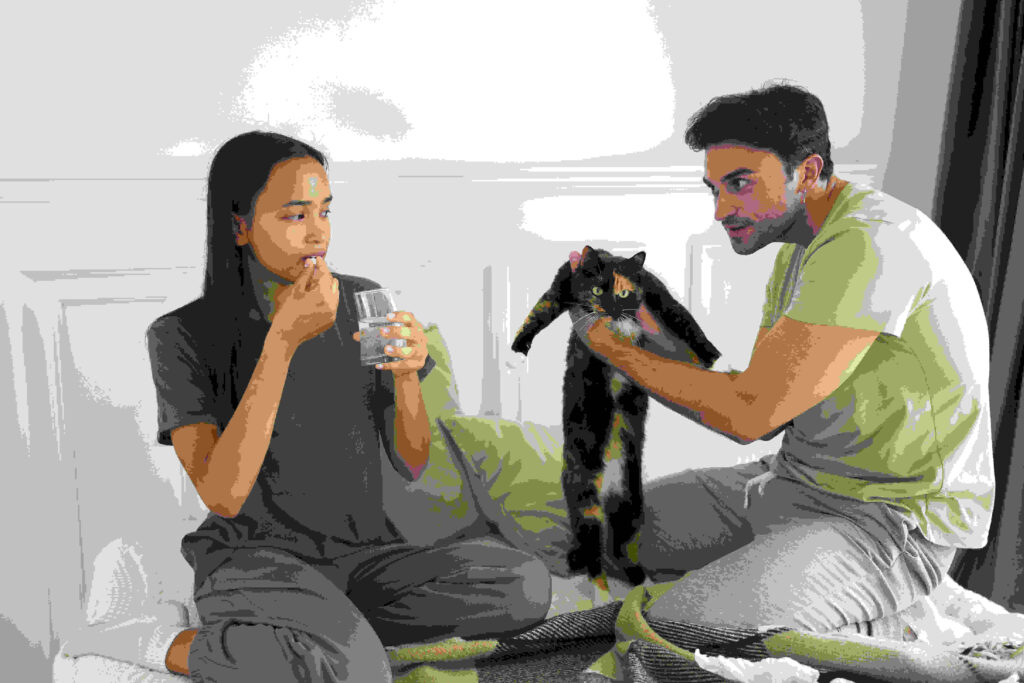Grooming is not just about keeping your pets lover looking their best—it’s essential for their health and comfort. Proper grooming helps maintain clean coats, prevents skin issues, and strengthens the bond between you and your furry friends. Here’s a comprehensive guide to grooming your dogs and cats effectively.
1. Brushing Their Coat
Regular brushing removes dirt, loose fur, and prevents matting.
- For Dogs:
- Short-Haired Breeds: Use a bristle brush or grooming mitt weekly.
- Long-Haired Breeds: Brush daily with a slicker brush or detangling comb to prevent mats.
- For Cats:
- Short-haired cats benefit from weekly brushing.
- Long-haired breeds, like Persians, need daily grooming to avoid tangles.
Tip: Start grooming when your pet is relaxed, and use treats to make the experience positive.
2. Bathing Basics
While pets don’t need frequent baths, an occasional wash keeps their coat and skin healthy.
- For Dogs: Bathe every 4–6 weeks or as needed using dog-specific shampoos. Avoid over-bathing to prevent dry skin.
- For Cats: Cats groom themselves, so bathing is rarely necessary. Only bathe them if they get into something sticky or harmful.
Tip: Use lukewarm water and avoid getting soap in their eyes or ears.
3. Nail Trimming
Overgrown nails can cause pain and affect your pet’s walking posture.
- Use pet-specific nail clippers or grinders.
- Trim small portions of the nail to avoid cutting the quick, which is sensitive and may bleed.
- For cats, provide scratching posts to help maintain their claws naturally.
Tip: If you’re nervous about trimming, consult a groomer or vet for guidance.
4. Ear Cleaning
Dirty ears can lead to infections.
- Check your pet’s ears weekly for wax buildup, redness, or odors.
- Use a vet-approved ear cleaner and cotton balls (never Q-tips).
- Dogs with floppy ears and cats with excessive earwax may require more frequent cleaning.
Tip: Be gentle and avoid inserting anything deep into the ear canal.
5. Eye Care
Keep your pet’s eyes clean and free from discharge.
- Wipe gently with a damp, soft cloth or pet-safe eye wipes.
- Monitor for redness, cloudiness, or excessive tearing, which may indicate an issue.
Tip: For breeds prone to tear stains, like Poodles or Persians, use specialized tear-stain removers.
6. Teeth Cleaning
Dental health is crucial for preventing bad breath, tooth decay, and gum disease.
- Brush your pet’s teeth 2–3 times a week using pet-specific toothpaste and brushes.
- Provide dental chews, toys, or treats that promote oral hygiene.
- Schedule annual dental checkups with your vet.
Tip: Introduce toothbrushing gradually, starting with letting your pet taste the toothpaste.
7. Paw and Pad Care
Your pet’s paws are exposed to rough surfaces and temperature extremes.
- Check their paws regularly for cuts, splinters, or debris.
- Moisturize dry or cracked pads with pet-safe balms.
- In winter, rinse paws after walks to remove salt or ice-melting chemicals.
Tip: Trim fur between paw pads for better grip and cleanliness.
8. Dealing with Shedding
Shedding is natural but can be managed with proper care.
- Brush regularly to reduce loose hair around your home.
- Use deshedding tools during peak shedding seasons (spring and fall).
- For heavy shedders, consider a high-quality diet rich in Omega-3 fatty acids to improve coat health.
Tip: Vacuum frequently and invest in lint rollers to keep your furniture fur-free.
9. Skin and Coat Health
Healthy skin and coats reflect your pet’s overall well-being.
- Monitor for dandruff, redness, or hot spots.
- Use grooming as an opportunity to check for lumps, bumps, or parasites like fleas and ticks.
- Feed a balanced diet with supplements like fish oil to maintain coat shine.
Tip: Consult your vet if you notice persistent skin issues or excessive shedding.
10. Professional Grooming
Some breeds require professional grooming for trimming, styling, or specialized care.
- Schedule regular grooming appointments for breeds like Poodles, Shih Tzus, or Maine Coons.
- Professionals can handle tasks like anal gland expression or advanced mat removal.
Tip: Choose a groomer experienced with your pet’s breed for the best results.
Final Thoughts
Regular grooming keeps your pets healthy, comfortable, and looking their best. It’s also an excellent way to strengthen your bond and show your love. By following these tips and staying attentive to your pet’s needs, you can make grooming a positive and rewarding experience for both of you

